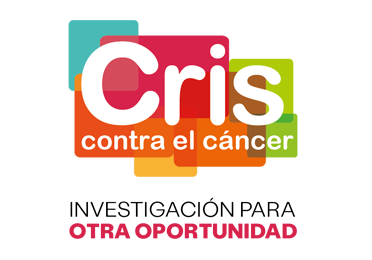
One major challenge in improving outcomes for cancer patients is reverting resistance to anticancer therapies including PARP inhibitors (PARPi). The need to identify functional biomarkers to better predict sensitivity to these therapies and more precisely guide clinical decision making is critical. While PARPi have recently and thankfully been approved for the treatment of BRCA1/2-mutated metastatic breast cancers, unfortunately these patients will ultimately become resistant to these agents over time.
Now published both open access online and in print in the flagship journal of the European Society for Medical Oncology (ESMO), Annals of Oncology*, VHIO’s translational and clinical investigators have shown the efficacy of a protein, RAD51, as a functional biomarker with clinical utility in more accurately selecting patients who will be most likely to benefit from PARPi therapy.
First authored by Cristina Cruz, Medical Oncologist and Clinical Investigator at VHIO and the Vall d´Hebron University Hospital (HUVH), this study was spurred through support received from the Spanish Association against Cancer (AECC), and is reflective of VHIO´s purely translational approach to advancing research against cancer. The multidisciplinary team counted on the expertise of other VHIO leading researchers from its Experimental Therapies Group directed by Violeta Serra, High Risk and Cancer Prevention Group led by Judith Balmaña, and VHIO’s Breast Cancer Group headed by Cristina Saura.
The team investigated the in vivo mechanisms of PARPi resistance in patient-derived tumor xenografts (PDX) models generated by implanting tumor samples from patients with a germline BRCA1/2 mutation and breast or ovarian cancer to subsequently establish sensitivity or resistance to PARPi. “We know that not all patients carrying these germline mutations respond to these inhibitors and numerous mechanisms of resistance have already been described. Identifying functional biomarkers is of paramount importance and our research has effectively demonstrated RAD51 to be a predictor of resistance to these agents,” explains Cristina Cruz, who is also Staff Scientist of Judith Balmaña’s Group.
PARPi block the PARP enzyme in helping to repair DNA when it becomes damaged. Preventing it from doing its repair work in cancer cells leads to cell death. However, patients become resistant to these inhibitors and there is therefore a pressing need to better predict resistance in these patients.
Violeta Serra, corresponding author of the paper observes, “As a multidisciplinary translational tour de force our teams have successfully identified a dynamic and predictive biomarker, RAD51, as an indicator of functional DNA homologous recombination repair and its consequent clinical utility in establishing which patients will be sensitive to PARP inhibitors.”
“Up until now, RAD51 could only be used in fresh samples and applicability was therefore extremely limited. Our discovery has shown that it can also be used in a retrospective sample set. As a previously identified biomarker, we have now been able to show its true clinical value,” continues Cristina.
BRCA1 and BRCA2 genes encode essential proteins for DNA homologous recombination repair (HRR), and loss of function of either gene impairs this high-fidelity DNA repair pathway triggers genetic instability and increases the risk of breast or ovarian cancer at a younger age due to the difficulty in repairing DNA damage. Between 5-10% of these breast cancers are hereditary mainly caused by these BRCA1 and BRCA2 mutations. These patients are sensitive to DNA damaging agents including anthracyclines, platinum salts as well as novel therapies that block DNA repair including PARPi.
VHIO teams are dedicated to potentiating these inhibitors for the more effective treatment of BRCA mutation carriers, and these devoted and purely translational efforts have since led to the approval of certain agents by the US Food and Drug Administration (FDA). “Aimed at improving outcomes for patients who have progressed on other approved therapies, treatment with PARPi has shown excellent results when compared with standard chemotherapy,” explains Judith Balmaña who is also co-author and (co) Principal Investigator of several pioneering clinical studies investigating PARPi.
“Importantly, not only has efficacy of these inhibitors been demonstrated in ovarian and breast cancer, their promise, although still requiring further studies, has also been seen beyond treating breast cancer patients with a BRCA germline mutation. We are now seeing promise in patients with metastatic disease across tumor types,” adds Judith.
“While we know a great deal about mechanisms of resistance occurring preclinically, we still have to establish their implication and impact at the clinical level. Our study has successfully delivered on this ambition by validating the functionality of RAD51 as a biomarker and demonstrating that tumors from BRCA1/2-mutation carriers may restore the restauration of homologous recombination repair and acquire PARPi resistance through diverse mechanisms ,” concludes Violeta.
VHIO teams are now investigating the relevance of this biomarker across more tumor types including prostate, pancreatic and endometrial cancers. Further, the direct detection of RAD51 as a functional biomarker of HRR may better guide the selection of patients eligible for PARPi-monotherapy as well as the use of combination therapies such as PARP paired with ATM blockade for PARPi-resistant patients.
Reference:
* RAD51 foci as a functional biomarker of homologous recombination repair and PARP inhibitor resistance in germline BRCA-mutated breast cancer. C Cruz, M Castroviejo-Bermejo, S Gutiérrez-Enríquez, A Llop-Guevara, Y H Ibrahim, A Gris-Oliver, S Bonache, B Morancho, A Bruna, O M Rueda, Z Lai U M Polanska, G N Jones, P Kristel, L de Bustos, M Guzman, O Rodríguez, J Grueso, G Montalban, G Caratú, F Mancuso, R Fasani, J Jiménez, W J Howat, B Dougherty, A Vivancos, P Nuciforo, X Serres-Créixams, I T Rubio, A Oaknin, E Cadogan, J C Barrett, C Caldas, J Baselga, C Saura, J Cortés, J Arribas, J Jonkers, O Díez, M J O’Connor, J Balmaña, V Serra. Annals of Oncology, Volume 29, Issue 5, 1 May 2018, Pages 1203–1210, https://doi.org/10.1093/annonc/mdy099.











